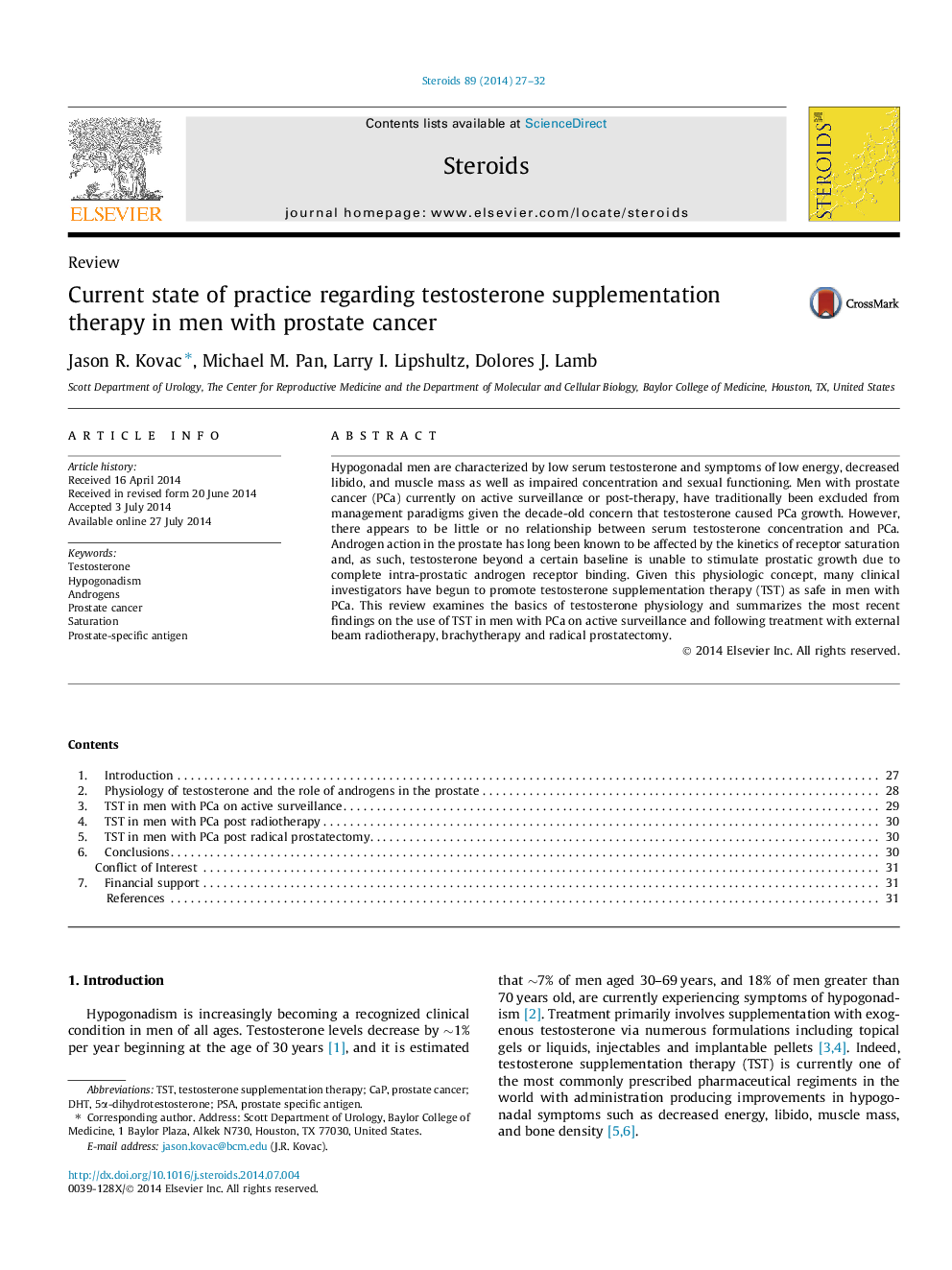| Article ID | Journal | Published Year | Pages | File Type |
|---|---|---|---|---|
| 2029207 | Steroids | 2014 | 6 Pages |
•Basics of testosterone physiology and the role of androgens in the prostate are discussed.•Role of testosterone supplementation therapy (TST) in men on active surveillance is reviewed.•Current philosophy regarding the use of TST following prostate cancer treatment is summarized.
Hypogonadal men are characterized by low serum testosterone and symptoms of low energy, decreased libido, and muscle mass as well as impaired concentration and sexual functioning. Men with prostate cancer (PCa) currently on active surveillance or post-therapy, have traditionally been excluded from management paradigms given the decade-old concern that testosterone caused PCa growth. However, there appears to be little or no relationship between serum testosterone concentration and PCa. Androgen action in the prostate has long been known to be affected by the kinetics of receptor saturation and, as such, testosterone beyond a certain baseline is unable to stimulate prostatic growth due to complete intra-prostatic androgen receptor binding. Given this physiologic concept, many clinical investigators have begun to promote testosterone supplementation therapy (TST) as safe in men with PCa. This review examines the basics of testosterone physiology and summarizes the most recent findings on the use of TST in men with PCa on active surveillance and following treatment with external beam radiotherapy, brachytherapy and radical prostatectomy.
